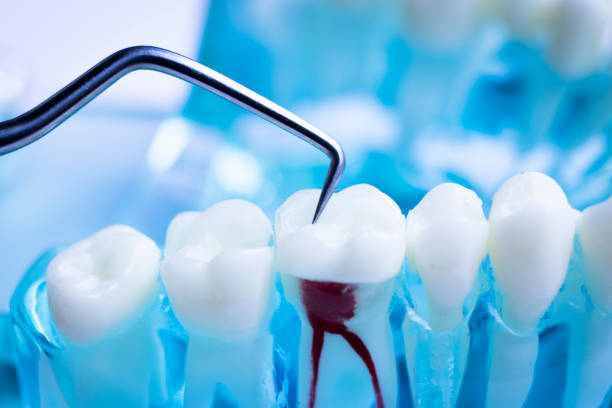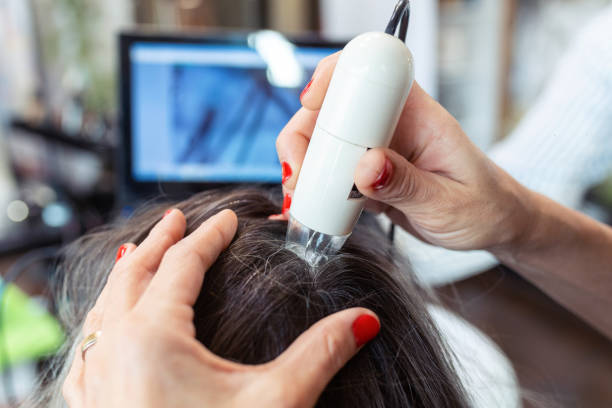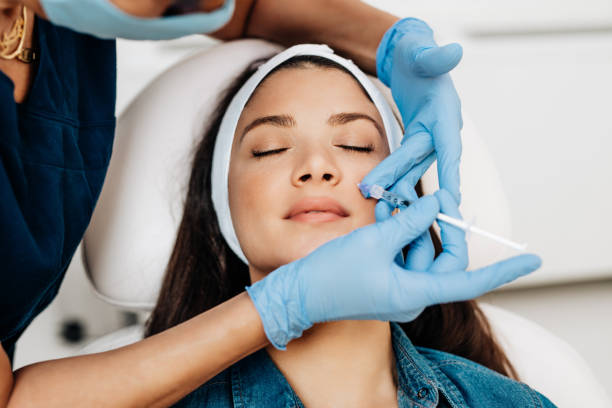 Zapier Automation – Automate Publishing. Free Your Time!
Zapier Automation – Automate Publishing. Free Your Time!
Everything You Need to Know About Dermal Filler Injections
Written by salmaa ajaib » Updated on: June 17th, 2025

Dermal Fillers Injections in Islamabad have transformed the cosmetic industry, offering a non-surgical approach to address aging concerns, enhance facial features, and restore lost volume. For those interested in facial rejuvenation but hesitant about invasive surgery, fillers are an increasingly popular option that delivers natural-looking results with minimal downtime. Whether you’re considering your first injection or looking to enhance a previous treatment, understanding the science behind fillers, the various types available, and the process involved is essential.
Understanding Dermal Fillers: How They Work
Dermal fillers are injectable gels designed to plump, shape, and smooth areas of the face, counteracting age-related volume loss, and targeting static wrinkles—lines and folds that are visible even when your face is at rest. Unlike neurotoxins like Botox, which relax the muscles to prevent dynamic wrinkles (those formed from movement), dermal fillers work by adding volume beneath the skin’s surface to lift and smooth targeted areas. They can be used to:
Fill in lines and wrinkles, like nasolabial folds and marionette lines
Enhance volume in areas such as the cheeks, lips, and temples
Refine contours, including the jawline and chin
Reduce the appearance of under-eye hollows (tear troughs)
Types of Dermal Fillers
Not all dermal fillers are the same. Here’s a look at the primary types used in aesthetic practice, each tailored for specific results and areas:
Hyaluronic Acid (HA) Fillers: Hyaluronic acid is a naturally occurring substance in the skin that attracts moisture, contributing to a plump, hydrated appearance. HA fillers (e.g., Juvederm, Restylane) are the most commonly used type, ideal for a wide range of areas due to their versatility and reversibility. The effects last between 6 and 18 months, depending on the formula and location.
Calcium Hydroxylapatite (CaHA) Fillers: Composed of calcium-based microspheres, CaHA fillers like Radiesse offer firmer consistency and are typically used for deeper folds and areas with significant volume loss, such as the cheeks and jawline. These fillers also promote collagen production, extending their efficacy for around 12 to 18 months.
Poly-L-lactic Acid Fillers: Known as a collagen stimulator, Poly-L-lactic acid (Sculptra) encourages the body’s natural collagen production. Often used for subtle volume restoration over multiple sessions, Sculptra is particularly effective for patients seeking gradual, long-lasting improvement, with results that can last up to two years.
Polymethylmethacrylate (PMMA) Fillers: These fillers (e.g., Bellafill) contain small, smooth PMMA beads suspended in a collagen gel. They are semi-permanent, used mainly for deeper wrinkles and acne scars, but require a significant commitment due to their longevity, lasting up to five years.
Autologous Fat Transfer: While not a traditional “filler,” fat can be harvested from another area of your body and re-injected into the face. This option offers natural, long-term results but requires a more intensive procedure with downtime.
The Benefits of Dermal Fillers
Dermal fillers offer several advantages that have contributed to their popularity:
Immediate Results: Most fillers provide near-instant results, with full effects visible after any minor swelling subsides, usually within a week.
Minimal Downtime: Unlike surgery, which requires significant recovery time, dermal filler treatments have little to no downtime, allowing patients to resume normal activities within hours.
Tailored Solutions: With a wide variety of formulations and application techniques, dermal fillers allow providers to personalize treatments to achieve a range of outcomes, from subtle enhancements to more dramatic transformations.
Extended Results: Though not permanent, fillers offer long-lasting benefits, generally from 6 to 24 months, depending on the type and treatment area.
What to Expect During and After the Procedure
A dermal filler treatment typically begins with a consultation, where your aesthetic goals, facial anatomy, and the most suitable filler type are discussed. During the procedure, a numbing cream or local anesthetic is applied to minimize discomfort. The injector then strategically administers the filler using fine needles or cannulas, depending on the area and technique used.
Post-Procedure Care:
Avoid touching or massaging the treated area for 24 hours to prevent filler migration.
Minimize sun exposure and avoid strenuous activities, which can exacerbate swelling.
Expect mild redness, swelling, and bruising, which usually subsides within a few days. Cold compresses can help reduce any minor swelling.
Potential Risks and Considerations
While generally safe when performed by a qualified practitioner, dermal fillers carry potential risks. Temporary side effects include redness, swelling, and bruising. In rare cases, more serious complications like infection, lumps, and vascular occlusion (blockage of a blood vessel) can occur. To minimize these risks, choosing an experienced, licensed injector with a deep understanding of facial anatomy is crucial.
Selecting a Qualified Provider
Finding the right provider is key to achieving safe and satisfying results. Look for a board-certified dermatologist, plastic surgeon, or a licensed professional trained in advanced injection techniques. Reviewing the provider’s portfolio and patient testimonials can give you insight into their experience and aesthetic approach.
Tips for Preparing and Maintaining Results
Research Your Options: Familiarize yourself with different types of fillers and discuss your options with your provider.
Avoid Blood Thinners: If possible, avoid taking blood-thinning medications or supplements like aspirin, ibuprofen, or vitamin E for at least a week prior, as these can increase bruising.
Follow Aftercare Instructions: Proper aftercare can enhance your results and minimize risks, so follow any guidelines provided.
The Future of Dermal Fillers
As technology evolves, fillers continue to advance, with new formulations designed to improve both longevity and natural results. Research into bio-stimulating fillers and next-generation compounds promises future innovations that will further elevate non-surgical aesthetics.
Final Thoughts
Dermal fillers offer an excellent way to rejuvenate and enhance your appearance with minimal commitment. By choosing a qualified provider, understanding the nuances of each filler type, and following proper aftercare, you can achieve a refreshed, natural look tailored to your aesthetic goals. With the right approach, dermal fillers can enhance confidence and provide a subtle but impactful boost that helps you look and feel your best.
Note: IndiBlogHub features both user-submitted and editorial content. We do not verify third-party contributions. Read our Disclaimer and Privacy Policyfor details.
Copyright © 2019-2025 IndiBlogHub.com. All rights reserved. Hosted on DigitalOcean for fast, reliable performance.

















